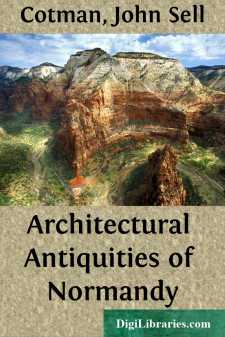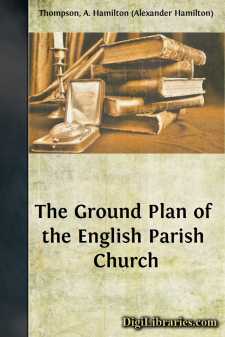Architecture
Architecture Books
Sort by:
Preface "A thousand years ago, by the rim of a tiny spring, a monk who had avowed himself to the cult of Saint Saturnin, robed, cowled and sandalled, knelt down to say a prayer to his beloved patron saint. Again he came, this time followed by more of his kind, and a wooden cross was planted by the side of the "Fontaine Belle Eau," by this time become a place of pious pilgrimage. After the...
more...
by:
John Sell Cotman
PREFACE. An artist, engaged in the illustration of the Architectural Antiquities of England, could scarcely do otherwise than often cast a wistful look towards the opposite shores of Normandy; and such would particularly be the case, if, like Mr. Cotman, to a strong attachment to his profession and the subject, he should chance to add a residence in Norfolk. This portion of the kingdom of the...
more...
by:
Vitruvius Pollio
PREFACE During the last years of his life, Professor Morgan had devoted much time and energy to the preparation of a translation of Vitruvius, which he proposed to supplement with a revised text, illustrations, and notes. He had completed the translation, with the exception of the last four chapters of the tenth book, and had discussed, with Professor Warren, the illustrations intended for the first...
more...
by:
John Ruskin
The exaltation, the sin, and the punishment of Tyre have been recorded for us, in perhaps the most touching words ever uttered by the Prophets of Israel against the cities of the stranger. But we read them as a lovely song; and close our ears to the sternness of their warning: for the very depth of the Fall of Tyre has blinded us to its reality, and we forget, as we watch the bleaching of the rocks...
more...
GLOSSARY OF TECHNICAL WORDS. Abacus.—The upper portion of the capital of a column, upon which the weight to be carried rests. Aisle (Lat. ala).—The side subdivision in a church; occasionally all the subdivisions, including the nave, are called aisles. Apse.—A semicircular or polygonal termination to, or projection from, a church or other public building. Arcade.—A range of arches, supported on...
more...
by:
Claude Perrault
ARTICLE I. Of the great Merits of Vitruvius, and the Excellencies of his Works. here are so many things in the Works of Vitruvius that do not directly appertain to Architecture, that one would think they were less fitted to Instruct those that have a design to learn the Precepts of this Art, than to perswade the World that the Author was the most knowing Architect that ever was, and a Person of the...
more...
by:
Frank Cousins
Foreword So many books have been published which are devoted wholly or in part to the fine old Colonial residences and public buildings of Philadelphia, including Germantown, that it might seem almost the part of temerity to suppose there could be a place for another one. A survey of the entire list, however, discloses the fact that almost without exception these books are devoted primarily to a...
more...
INTRODUCTION No one can look at a map of the Iberian Peninsula without being struck by the curious way in which it is unequally divided between two independent countries. Spain occupies by far the larger part of the Peninsula, leaving to Portugal only a narrow strip on the western seaboard some one hundred miles wide and three hundred and forty long. Besides, the two countries are separated the one...
more...
BEFORE quitting England for a first visit to Spain in the Autumn of 1869, I made up my mind both to see and draw as much of the Architectural remains of that country as the time and means at my disposal would permit; and further determined so to draw as to admit of the publication of my sketches and portions of my notes on the objects represented, in the precise form in which they might be made. I was...
more...
CHAPTER I THE ORIGIN OF THE CHURCH PLAN IN ENGLAND § 1. Side by side with the establishment of Christianity as the religion of the Roman empire, there appeared a fully developed plan for places of Christian worship. The normal Christian church of the fourth century of our era was an aisled building with the entrance at one end, and a semi-circular projection known as the apse at the other. The body of...
more...





![Stones of Venice [introductions]](https://digilibraries-com.s3.eu-central-1.amazonaws.com/covers/b35453e4-3053-4fd7-b588-ba179aeb1984.jpg)





